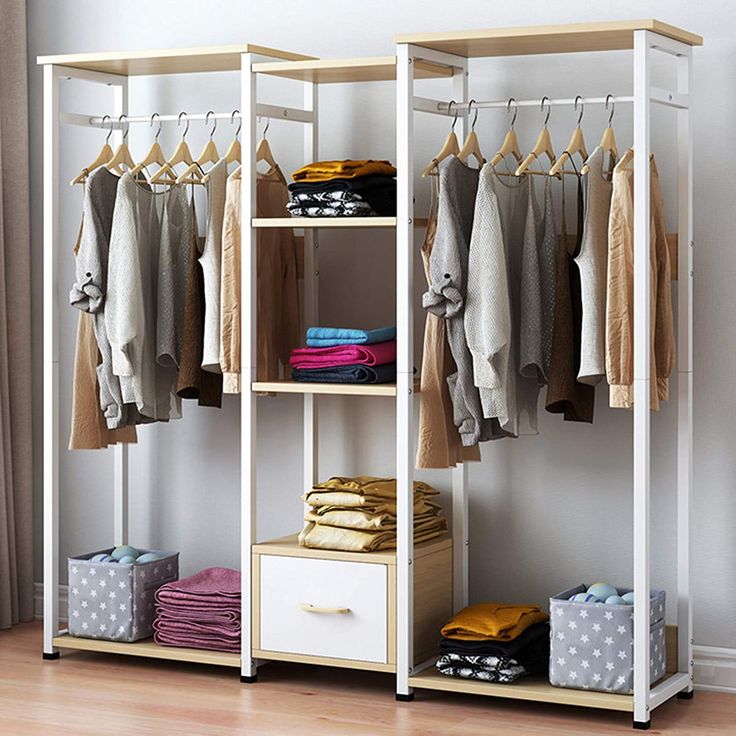In the competitive world of retail, clothing stores must constantly innovate to attract and retain customers. One of the most effective ways to achieve this is by designing a multifunctional clothing store that not only showcases apparel but also provides a unique and engaging shopping experience. Central to this concept is the selection and arrangement of furniture, which plays a crucial role in shaping the store’s functionality and aesthetics. This article explores the key considerations and strategies for designing a multifunctional clothing store with an emphasis on effective furniture solutions.
The Importance of Multifunctional Design
Multifunctional design in a clothing store means creating spaces that serve multiple purposes, enhancing the overall shopping experience while optimizing the use of available space. This approach can lead to increased customer satisfaction, higher sales, and improved operational efficiency. According to a report by the National Retail Federation (NRF), retailers who invest in innovative store designs see a significant boost in foot traffic and customer engagement. A key component of this strategy is the careful selection of clothing store furniture that supports both functionality and aesthetic appeal.
Key Elements of Multifunctional Clothing Store Design
1. Flexible Layouts
A flexible store layout is essential for a multifunctional clothing store. This involves using modular furniture that can be easily reconfigured to accommodate different needs, such as seasonal changes, special promotions, or in-store events. Adjustable shelving units, movable racks, and foldable tables are excellent examples of versatile furniture that can be rearranged to create different layouts.
2. Versatile Display Units
Display units should not only be aesthetically pleasing but also versatile. Multi-tiered racks, rotating display stands, and adjustable mannequins allow for a dynamic presentation of products. These units should be designed to showcase clothing in various ways, from highlighting individual pieces to creating themed collections.
3. Integrated Technology
Incorporating technology into furniture solutions can greatly enhance the shopping experience. Interactive mirrors, digital signage, and smart fitting rooms are becoming increasingly popular in modern clothing stores. For instance, digital screens integrated into display tables can provide customers with additional product information, styling tips, or even virtual try-on options.
4. Comfortable Seating Areas
Creating comfortable seating areas within the store encourages customers to spend more time browsing and trying on clothes. Strategically placed benches, sofas, and lounge chairs can provide a relaxing environment for shoppers, making their visit more enjoyable. These seating areas can also be used for in-store events or customer consultations.
Clothing Store Design Considerations
When planning the design of a multifunctional clothing store, several factors must be taken into account to ensure that the space is both practical and appealing. A well-thought-out clothing store design not only enhances the shopping experience but also maximizes the use of available space.
1. Store Layout
The store layout should facilitate easy navigation and allow customers to move seamlessly from one section to another. Clear signage, wide aisles, and strategically placed displays can guide customers through the store, making it easier for them to find what they are looking for.
2. Lighting
Proper lighting is crucial in a clothing store. It highlights products, creates ambiance, and can influence the overall mood of the space. A combination of natural light, spotlights, and ambient lighting can be used to create a welcoming and visually appealing environment.
3. Color Scheme
The color scheme of the store should reflect the brand’s identity and appeal to the target audience. Neutral colors can create a sophisticated and elegant look, while bold colors can make the store more lively and energetic.
Case Studies: Successful Implementations
Case Study 1: Zara
Zara, a leading fashion retailer, is renowned for its innovative store designs. The company uses modular furniture and flexible layouts to quickly adapt to changing fashion trends and customer preferences. Zara’s stores often feature adjustable shelving and movable display units, allowing for frequent updates to the store’s appearance and product offerings.
Case Study 2: Nike
Nike has integrated technology into its store designs to create a unique shopping experience. The Nike flagship store in New York City features interactive displays and smart fitting rooms equipped with digital mirrors. These mirrors allow customers to see how different products look without trying them on, providing a convenient and engaging shopping experience.
Expert Opinions on Multifunctional Design
According to retail design expert Ken Nisch, Chairman of JGA, Inc., “The key to a successful multifunctional clothing store is flexibility. Retailers need to create spaces that can evolve with changing trends and customer needs. This requires investing in versatile furniture and innovative design solutions.”
Similarly, a report by McKinsey & Company highlights the importance of integrating technology into store designs. The report states that “retailers who leverage digital tools and smart furniture can create more personalized and interactive shopping experiences, leading to higher customer satisfaction and loyalty.”
Practical Tips for Implementing Multifunctional Furniture Solutions
1. Prioritize Modularity
Choose furniture that can be easily moved and reconfigured. Modular pieces, such as stackable shelves and collapsible racks, offer the flexibility needed to adapt to different store layouts and functions.
2. Focus on Aesthetics and Functionality
While functionality is crucial, aesthetics should not be overlooked. Select furniture that complements your store’s design theme and enhances the overall shopping experience. High-quality materials and stylish designs can create a more inviting atmosphere.
3. Incorporate Sustainable Practices
Sustainability is an important consideration in modern retail design. Opt for furniture made from eco-friendly materials and consider using refurbished or upcycled pieces. This not only reduces environmental impact but also appeals to environmentally conscious consumers.
4. Utilize Data and Analytics
Use data and analytics to understand customer behavior and preferences. This information can help you optimize your store layout and furniture arrangement, ensuring that it meets the needs and expectations of your target audience.
Conclusion
Designing a multifunctional clothing store involves a careful balance of aesthetics, functionality, and innovation. By selecting versatile and adaptable furniture solutions, retailers can create dynamic spaces that enhance the shopping experience and drive customer engagement. Incorporating technology and sustainable practices further adds to the store’s appeal, making it a destination for modern shoppers. As the retail landscape continues to evolve, staying ahead of trends and investing in multifunctional design will be key to long-term success.
By implementing these strategies, clothing stores can create an environment that not only attracts customers but also keeps them coming back. With the right furniture solutions, any clothing store can transform into a multifunctional space that meets the diverse needs of today’s shoppers.



